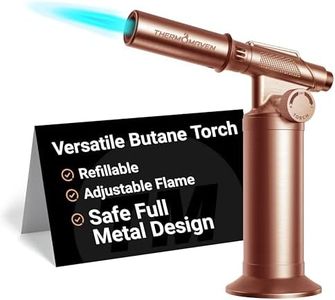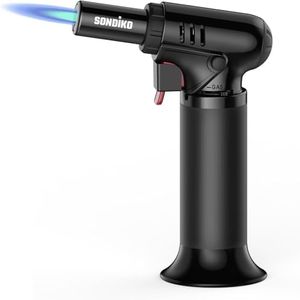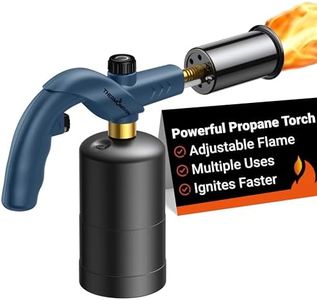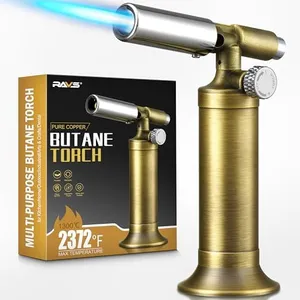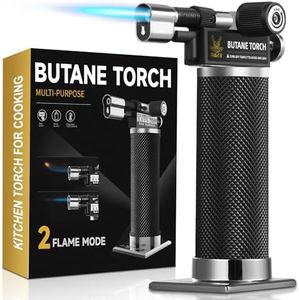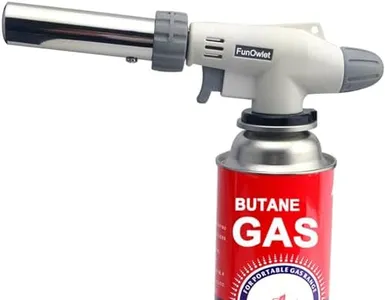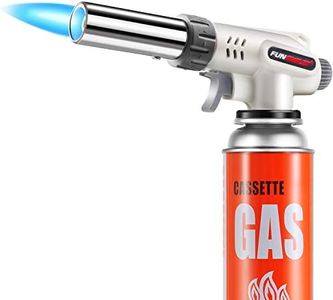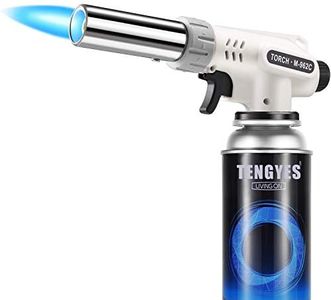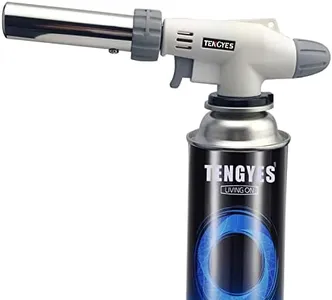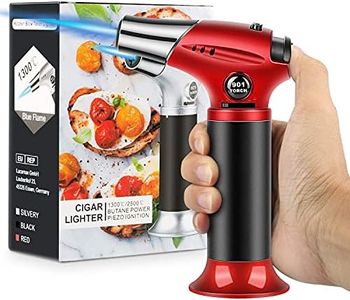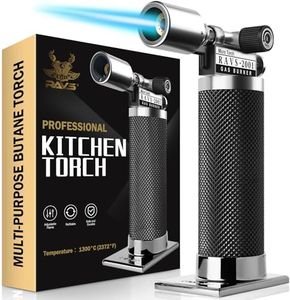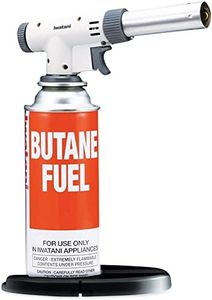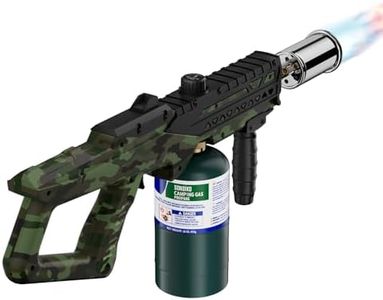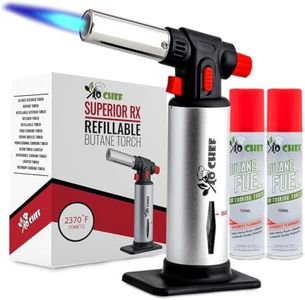10 Best Kitchen Torches 2025 in the United States
Our technology thoroughly searches through the online shopping world, reviewing hundreds of sites. We then process and analyze this information, updating in real-time to bring you the latest top-rated products. This way, you always get the best and most current options available.

Our Top Picks
Winner
Sondiko Butane Torch with Fuel Gauge S907, Refillable Soldering Torch with Adjustable Flame for Welding, Resin Art, Industrial(Butane Gas Not Included)
Most important from
12733 reviews
The Sondiko Butane Torch is a versatile tool designed for culinary enthusiasts and DIY crafters alike. One of its standout features is the easy one-handed operation, allowing you to adjust the flame without needing assistance—great for multitasking in the kitchen. The adjustable flame control and continuously flame mode provide flexibility, enabling you to achieve precise temperatures up to 1300°C/2372°F, which is ideal for tasks like caramelizing sugar or searing meats.
Another significant advantage is the easy-to-read fuel gauge, making it straightforward to monitor your butane levels and avoid overfilling. Its compatibility with all brands of small butane tanks means you won’t have trouble finding a refill. Weighing just 200.5 grams and measuring 6.1” x 4.53” x 2.32”, it’s lightweight and portable, perfect for not just indoor cooking but also outdoor activities like camping.
There are a few drawbacks to consider. While the torch offers excellent features, it does require butane gas, which is sold separately. Users may also find the maximum burn time of 20-50 minutes per refill may not be sufficient for extended projects, especially for those who plan to use it for industrial applications. Additionally, some feedback suggests that it may take a bit of practice to master the flame control for precise applications.
Most important from
12733 reviews
ThermoMaven Powerful Propane Torch, Kitchen Cooking Torch, Culinary Torch Lighter, Adjustable Blow Torch for Sous Vide Searing Steak, BBQ, Campfire Charcoal Starter, Blue (Propane Tank Not Included)
Most important from
422 reviews
The ThermoMaven Powerful Propane Torch is a versatile tool designed for both culinary and non-culinary uses. It features a safe design with an extended angled nozzle and burn-free guard to protect your hands. The flame size can be easily adjusted, offering precise control for tasks like sous vide cooking, searing steaks, and lighting charcoal. The torch reaches a high temperature of up to 3272°F (1800℃), making it powerful enough for various activities, including glass blowing and DIY projects. However, it's important to remember that the propane tank is not included, and the torch should not be used vertically to avoid safety hazards.
The torch is lightweight and portable, making it convenient for both home use and outdoor adventures. It is built with professional-grade materials, ensuring durability and safety. While the torch is user-friendly, it does require a certain level of caution during use to prevent accidents. It also comes with a 1-year warranty, providing some peace of mind regarding its quality and longevity.
Ideal for food enthusiasts, BBQ lovers, and campers, this torch is a great addition to any kitchen or outdoor toolkit. However, users should be aware of the safety instructions and the need for a separate propane tank.
Most important from
422 reviews
RAVS Copper Butane Torch Lighter, Refillable Kitchen Torch Cooking Torches, Blow Torch with Adjustable Flame, Creme Brulee Torch for Baking, Soldering Torch Gifts for Men, Butane is Not Included
Most important from
2750 reviews
The ravs Copper Butane Torch is a solid choice for anyone looking for a reliable kitchen torch, especially for culinary tasks like caramelizing sugar on desserts or other cooking applications. One of its main strengths is the adjustable flame control, allowing users to customize the flame size according to their needs, making it versatile for various tasks such as baking, jewelry making, or even soldering. The lightweight and portable design, combined with a comfortable grip, means it's easy to handle and maneuver, which is great for lengthy cooking projects.
Safety is also well-considered with the long angled nozzle that keeps your hand away from the flame, and the torch's sturdy copper construction ensures durability and effective heat dissipation. Additionally, the piezo ignition allows for fast and reliable startup, so you can get to work quickly.
There are a few drawbacks to consider. The torch does not come with butane, which is essential to operate it, so you'll need to purchase that separately. This could be a minor hassle for new users who may not realize they need to acquire fuel. Also, while the torch is designed for various uses, some users might find its capabilities limited compared to more specialized torches, especially for heavy-duty industrial tasks. It's crucial to remember that the torch performs best if you follow the filling instructions properly, as improper refilling can lead to issues.
The ravs Copper Butane Torch is a user-friendly, versatile tool that caters well to home cooks and hobbyists. Its solid construction and adjustable features make it suitable for a variety of applications, although users should be aware that it requires purchasing butane separately before use.
Most important from
2750 reviews
Buying Guide for the Best Kitchen Torches
When it comes to picking the right kitchen torch, it's important to consider a few key specifications to ensure you get the best fit for your culinary needs. Kitchen torches are versatile tools used for tasks like caramelizing sugar on desserts, searing meats, and even roasting vegetables. Understanding the different features and how they align with your cooking style will help you make an informed decision.FAQ
Most Popular Categories Right Now
